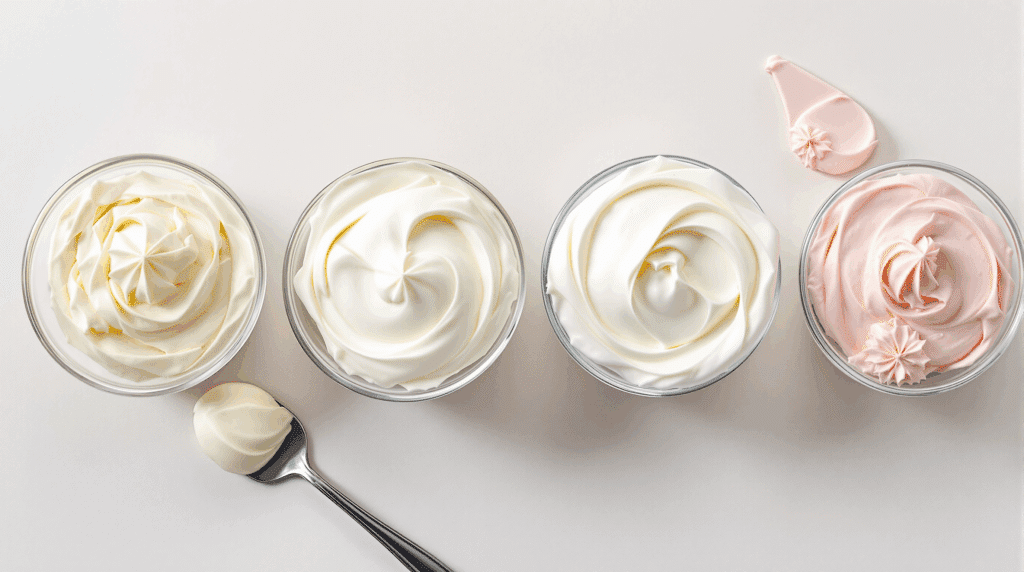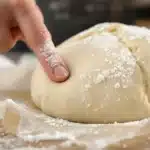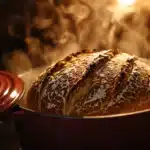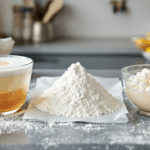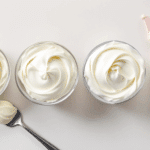What’s a celebration cake without its crown? Or a humble cupcake without its delightful swirl? Frosting, particularly buttercream, is often the literal icing on the cake – adding flavor, moisture, visual appeal, and a touch of decadent bliss. But walk into the world of buttercream, and you’ll quickly discover it’s not a one-size-fits-all affair. From simple powdered sugar concoctions to silky meringue-based clouds and rich yolk-based creams, a whole spectrum of styles exists, each with its own unique texture, sweetness level, stability, and preparation method.
For aspiring bakers, moving beyond the basic (and often intensely sweet) frosting made with just butter and powdered sugar can open up a new realm of sophistication and flavor balance. However, terms like Swiss Meringue Buttercream (SMBC) or Italian Meringue Buttercream (IMBC) can sound dauntingly technical. This guide aims to lead you to “Buttercream Bliss” by exploring the most popular styles, explaining their key ingredients and techniques, comparing their characteristics, and helping you choose the perfect buttercream for your next cake or cupcake masterpiece.
What Makes it Buttercream? The Core Idea
Generally speaking, a buttercream is a type of frosting where fat, primarily butter, serves as the base and main structural component. This butter is then combined with a sweetening and stabilizing element, which varies depending on the style. The goal is typically a frosting that is smooth, spreadable, pipeable, holds its shape reasonably well, and, of course, tastes delicious.
The key variables that differentiate the major buttercream styles include:
- The type of sweetener used (powdered sugar vs. granulated sugar).
- How the sugar is incorporated (simply beaten in vs. cooked into syrup or meringue).
- The use and treatment of eggs (no eggs, whites only, or yolks only).
- Temperature control during preparation.
These differences result in vastly different textures (from dense and crusting to light and silky), sweetness levels (from intensely sweet to subtly sweet), and stability (how well it holds its shape, especially in warmer temperatures).
The Buttercream Spectrum: Common Styles Explained
Let’s explore the characteristics and methods of the most frequently encountered buttercream types:
American Buttercream (Simple Buttercream / Decorator’s Buttercream)
This is likely the first buttercream most home bakers learn to make.
- Key Ingredients: Softened unsalted butter, confectioners’ (powdered) sugar, a small amount of liquid (milk, cream, or even water), vanilla extract or other flavoring, pinch of salt.
- Method (Simplest): Beat the softened butter with an electric mixer (hand or stand with paddle attachment) until smooth and creamy. Gradually add the sifted powdered sugar, alternating with small amounts of the liquid, beating well after each addition. Continue beating until light, fluffy, and spreadable. Add flavoring and salt at the end.
- Characteristics: Texture is typically dense and rich. Sweetness level is very high due to the large amount of powdered sugar. It tends to form a slight “crust” when exposed to air. Holds its shape well for basic piping (stars, shells, borders). It’s the quickest buttercream to prepare.
- Pros: Extremely easy and fast to make. Requires no cooking or special equipment beyond a mixer. Very stable for basic decorations that need to hold their shape firmly. Easily colored with gel pastes and flavored. Ingredients are readily available.
- Cons: Can be overwhelmingly sweet for many palates. Texture can sometimes be slightly grainy or heavy depending on the quality of the powdered sugar and mixing technique. Doesn’t hold up well in warm temperatures (softens easily). Lacks the silky smoothness of meringue buttercreams.
- Best Uses: Beginner cake decorating, children’s birthday cakes, filling sandwich cookies (like whoopie pies), creating sturdy borders or simple piped decorations, frosting cupcakes when a quick, sweet topping is desired.
Swiss Meringue Buttercream (SMBC)
A popular choice for its smooth texture and moderate sweetness.
- Key Ingredients: Egg whites (use pasteurized if concerned about raw eggs), granulated sugar, unsalted butter (softened but still cool), vanilla extract or other flavoring, pinch of salt.
- Method (Involves Cooking):
- Combine egg whites and granulated sugar in the clean, grease-free bowl of a stand mixer (or a heatproof bowl).
- Place the bowl over a saucepan of simmering water (bain-marie), ensuring the bottom of the bowl doesn’t touch the water. Whisk constantly until the sugar completely dissolves and the mixture feels warm to the touch and reaches 160°F (71°C) on an instant-read thermometer (this pasteurizes the whites).
- Transfer the bowl to your stand mixer fitted with the whisk attachment. Beat the hot mixture on medium-high speed until it forms a stiff, glossy, marshmallow-like meringue and, crucially, the outside of the bowl feels completely cool to the touch (back to room temperature). This cooling step is vital and can take 10-15 minutes or longer.
- Switch to the paddle attachment. With the mixer on low to medium-low speed, begin adding the softened (but still cool, around 65-70°F / 18-21°C) butter, one tablespoon or small chunk at a time, waiting briefly between additions.
- Once all butter is added, the mixture might look curdled or soupy – don’t panic! Increase the speed to medium-high and keep beating. It will eventually come together into a smooth, cohesive buttercream (this can take 5-15 minutes).
- Beat in vanilla extract, salt, and any other flavorings.
- Characteristics: Exceptionally silky smooth, light yet stable texture. Significantly less sweet than American buttercream. Has a rich, pronounced buttery flavor. Does not crust over. Holds intricate piping details beautifully.
- Pros: Luxurious smooth texture, balanced sweetness, very stable for detailed piping and creating sharp edges on cakes, holds up reasonably well in moderate room temperatures, beautiful satiny finish.
- Cons: More time-consuming and technique-sensitive than American buttercream. Requires careful temperature control (cooking whites, cooling meringue, butter temperature). Ideally requires a stand mixer for the long whipping times. Prone to temporarily “breaking” or curdling if temperatures are off during butter addition (but usually fixable).
- Best Uses: Elegant layer cakes, wedding cakes, smooth frosting finishes, intricate piping (flowers, fine details), filling macarons, frosting cupcakes for a sophisticated taste and look.
Italian Meringue Buttercream (IMBC)
Similar to Swiss Meringue, but often considered slightly more stable.
- Key Ingredients: Egg whites, granulated sugar, water (for syrup), unsalted butter (softened but cool), vanilla extract or other flavoring, pinch of salt.
- Method (Involves Hot Syrup):
- In a saucepan, combine granulated sugar and water. Heat, stirring occasionally until sugar dissolves, then boil without stirring until the syrup reaches the soft-ball stage (235-240°F / 113-115°C) on a candy thermometer.
- While the syrup cooks, start whipping the egg whites (sometimes with a pinch of cream of tartar or a small amount of sugar) in the clean, grease-free bowl of a stand mixer fitted with the whisk attachment until they reach soft peaks.
- Once the syrup reaches the target temperature, turn the mixer speed to medium-low. Very carefully and slowly, pour the hot syrup in a thin, steady stream down the side of the mixing bowl into the whipping whites, avoiding contact with the moving whisk (which would splatter hot syrup).
- Once all syrup is added, increase the mixer speed to medium-high and continue whipping until the meringue is very stiff, glossy, and the outside of the bowl feels completely cool to the touch.
- Switch to the paddle attachment and proceed exactly as with SMBC: gradually beat in the softened (but cool) butter piece by piece until smooth and emulsified (again, beat through any curdling). Beat in flavorings and salt.
- Characteristics: Very similar to SMBC – silky smooth, light, stable, not overly sweet. Some bakers find it slightly denser and even more stable than Swiss Meringue due to the fully cooked sugar syrup.
- Pros: Extremely smooth and glossy finish. Considered the most stable buttercream, holding up best in warmer temperatures. Excellent for sharp edges and very fine piping work.
- Cons: The most technically demanding buttercream due to the need to cook sugar syrup precisely and safely pour it into whipping egg whites. Requires a reliable candy thermometer and stand mixer. Shares the same potential “curdling” phase as SMBC if temperatures aren’t right.
- Best Uses: Similar to SMBC, but often preferred for situations demanding maximum stability – wedding cakes in warmer climates, very intricate piping, achieving the sharpest edges.
French Buttercream
Unique in its use of egg yolks, resulting in exceptional richness.
- Key Ingredients: Egg yolks, granulated sugar, water (for syrup), unsalted butter (softened), vanilla extract or other flavoring, pinch of salt.
- Method (Similar Start to Italian):
- Cook granulated sugar and water in a saucepan to the soft-ball stage (235-240°F / 113-115°C), using a candy thermometer.
- While the syrup cooks, beat the egg yolks in the bowl of a stand mixer fitted with the whisk attachment until they are very thick, pale yellow, and form a ribbon when the whisk is lifted.
- With the mixer on medium-low speed, very carefully and slowly pour the hot syrup in a thin stream down the side of the bowl into the whipping yolks.
- Continue whipping on medium-high speed until the mixture is very thick, has increased in volume, and the outside of the bowl feels completely cool to the touch.
- Switch to the paddle attachment. Gradually beat in the softened butter piece by piece until the mixture is light, smooth, and emulsified. Beat in flavorings and salt.
- Characteristics: Incredibly rich, smooth, and velvety texture, often described as tasting like silky custard or vanilla ice cream. Naturally pale yellow due to the yolks. It’s the softest of the buttercreams and the least stable in warm temperatures.
- Pros: Unparalleled richness and deep flavor due to the egg yolks. Exceptionally smooth, luxurious mouthfeel.
- Cons: Least stable buttercream in heat; butter and yolk fat soften easily, making it prone to melting or becoming too soft to pipe well in warm environments. The richness can be very intense (a little goes a long way). Some perceive it as more difficult due to cooking syrup and potential temperature sensitivity. Natural yellow hue makes achieving pure white or certain pastel colors difficult. Traditionally uses raw yolks pasteurized by hot syrup – ensure proper technique if concerned.
- Best Uses: Primarily as a delicious filling between cake layers or for frosting cakes where intense richness is desired and temperature stability isn’t the main priority (e.g., for serving soon in a cool setting). Makes an excellent flavor base for additions like coffee or chocolate.
Other Notable Styles (Briefly):
- Ermine Buttercream (Flour Buttercream / Cooked Milk Frosting): An old-fashioned favorite making a comeback. A smooth paste (roux) is made by cooking flour, sugar, and milk together until thick, then cooled completely. This cooled paste is then whipped extensively with softened butter. Result: Surprisingly light, very smooth (like cream cheese frosting without the tang), significantly less sweet than American, and quite stable.
- German Buttercream: Uses pastry cream (crème pâtissière) as its base. Fully cooled pastry cream is gradually beaten into softened butter. Result: Rich, flavored by the pastry cream (usually vanilla), less sweet than American, moderately stable (less so than meringue styles).
Tips for Buttercream Success (General)
- Temperature is Paramount: This is the #1 key, especially for meringue and French styles. Butter should be softened but still cool (pliable, holds shape, around 65-70°F / 18-21°C). Meringue or yolk/syrup mixtures must be cooled completely to room temperature before adding butter. Temperature mismatches cause splitting/curdling.
- Use a Stand Mixer: While American buttercream is easy by hand, the long whipping times needed for stable meringues and yolk foams, plus the extended beating required to emulsify butter in cooked styles, make a stand mixer highly recommended (almost essential) for Swiss, Italian, and French buttercreams.
- Beat Through the Curdle: Don’t panic if your SMBC or IMBC looks split, watery, or curdled after adding the butter! This is very common. Just scrape down the bowl and keep beating on medium-high speed. Usually, after 5-15 minutes of persistent beating, it will magically come together into a smooth emulsion. If it absolutely refuses, gently warming the outside of the bowl slightly (if too cold) or chilling the bowl briefly (if too warm) can help, then beat again.
- Use the Paddle for Butter: After achieving your meringue or yolk foam with the whisk attachment, switch to the paddle attachment to incorporate the butter and finish the buttercream. The paddle incorporates less air than the whisk, preventing your finished buttercream from being overly bubbly (which makes smooth frosting difficult).
- Unsalted Butter Rules: Use good quality unsalted butter for the best flavor and control over saltiness.
- Storage & Re-whipping: Meringue-based and French buttercreams store beautifully. Refrigerate airtight for up to a week or freeze for several months. Crucially, they must be brought back fully to room temperature slowly and gently and then re-whipped thoroughly (paddle attachment) before use to restore their smooth, emulsified texture. They will likely look broken or dense straight from the fridge. American buttercream crusts quickly; store airtight at room temp for a day or two, or refrigerate/freeze (needs re-whipping).
- Smooth Out Air Bubbles: If your finished buttercream seems airy or has bubbles, beat it on the lowest speed with the paddle attachment for 2-5 minutes to knock out the excess air before frosting your cake.
Choosing Your Bliss: Which Buttercream When?
- Easiest/Fastest/Kids/Basic Decor: American Buttercream
- Silky Smooth Finish/Intricate Piping/Less Sweet/Stable: Swiss or Italian Meringue Buttercream (Italian being slightly more heat stable but more technical).
- Ultimate Richness & Flavor (Cool Temps): French Buttercream
- Unique Texture/Less Sweet/Stable Alternative: Ermine Buttercream
- Custard Flavor/Richness: German Buttercream
Conclusion: Find Your Frosting Favorite
The term “buttercream” encompasses a wonderful variety of textures, flavors, and techniques. While simple American buttercream offers ease and stability for basic needs, exploring the world of cooked meringue (Swiss and Italian) and yolk-based (French) buttercreams unlocks unparalleled smoothness, balanced sweetness, and sophisticated finishes for your cakes and pastries. Understanding the different methods, paying close attention to ingredient temperatures, and mastering the techniques (especially for meringue and syrup styles) are key to achieving buttercream bliss. Don’t be afraid to try different styles – you’ll soon discover your personal favorites for every occasion and elevate your decorating potential significantly.

